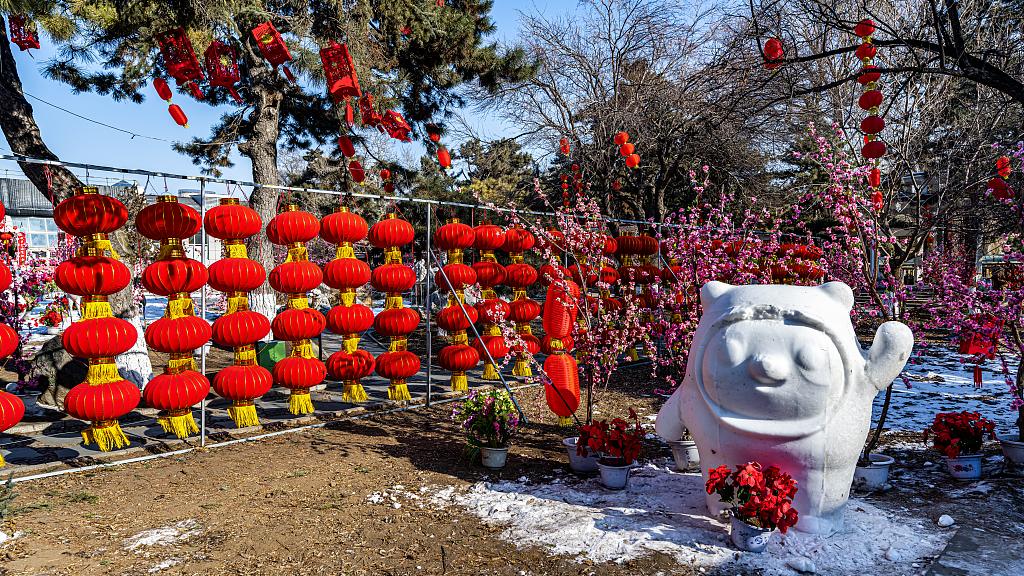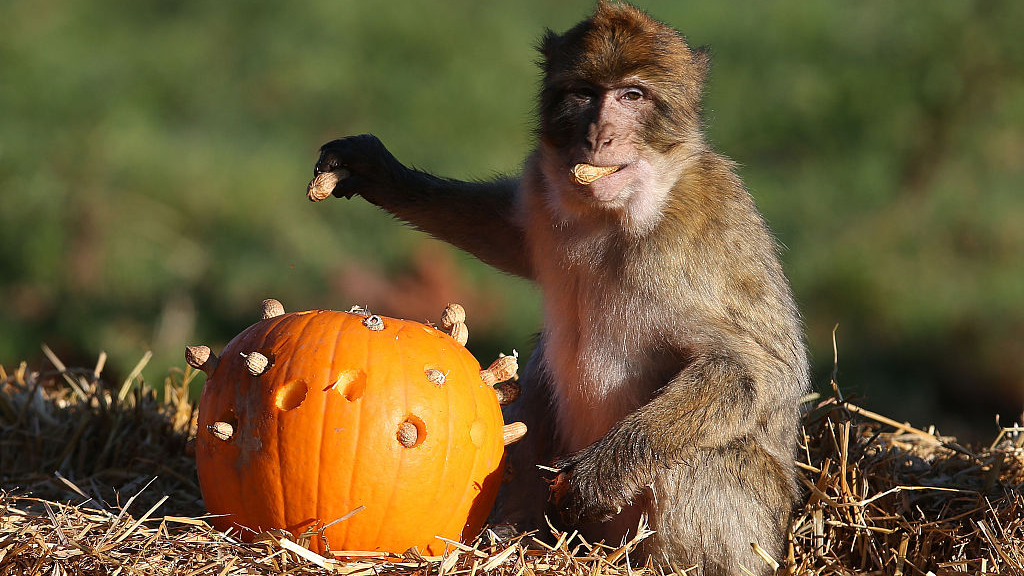
A park displays Chinese New Year decorations in Changchun, northeast China's Jilin Province, January 29, 2022. /VCG
A park displays Chinese New Year decorations in Changchun, northeast China's Jilin Province, January 29, 2022. /VCG
Editor's note: David Ferguson is a senior translation editor at Foreign Languages Press. The article reflects the author's opinions and not necessarily those of CGTN.
There is an inherent risk in exporting your cultural traditions. Ask any Scottish person of a certain age and they will explain.
I grew up in a village in rural Scotland. When I was a boy, on October 31, we used to celebrate a major festival called Halloween. The event was much-anticipated during the preceding weeks. After dark, the children of the village would dress up in costumes – homemade, usually from whatever old clothes were available – and paint our faces or wear masks. We would also carve lanterns out of turnips (a thankless task; turnips are small and very hard). Then we would tour the village, knocking on each door and asking "Please to help the guisers!" Some old scunners would refuse to answer, but the vast majority would invite the "guisers" in. Then, in exchange for some sweets and fruit, or even a little money from the more generous hosts, the children would put on a performance. Mostly this was a song, a poem, or a few jokes, but my dad would always write a short play for myself and my two brothers to perform. Our arrival was keenly awaited, especially by older villagers who didn't have many visitors or much entertainment. These were simpler times.
This tradition was called "the guisin" (clearly an adaptation of the word "disguising"), and this was the Halloween that Scottish exiles took with them to the United States. When the U.S. gave Halloween back to us a couple of hundred years later, it involved elaborate shop-bought costumes, with fancy-dress parties for adults, and "the guisin" had become "trick or treat." This is the version of Halloween that has been universally exported and is now celebrated all over the world. Perhaps the traditional Halloween has survived in some remote pockets of Scotland, but to be honest I suspect not.
It may be a little mean-spirited of me but I can't help noticing that the Scottish tradition of requesting a reward, in exchange for something, has been replaced by an American tradition of demanding a reward, backed up by a threat, in exchange for nothing.

Macaque monkeys are given pumpkins ahead of the Halloween festivities at Blair Drummond Safari park, Scotland, the United Kingdom, October 27, 2017. /VCG
Macaque monkeys are given pumpkins ahead of the Halloween festivities at Blair Drummond Safari park, Scotland, the United Kingdom, October 27, 2017. /VCG
Perhaps I shouldn't be too harsh on Americans. Customs and traditions constantly evolve. "My" Scottish Halloween had evolved from earlier forms dating back to pagan times, with different practices.
There is a connection between Scottish Halloween and Chinese New Year. Dressing up and painting your face in Scotland served a similar purpose to wearing red and letting off fireworks in China – to drive off monsters or evil spirits.
The other obvious similarity is that like Halloween, Chinese New Year has now been widely exported around the world. One aspect of this is that there are several Asian countries where Chinese New Year is a long-standing festival; they have their own traditions that may differ from mainstream Chinese practices.
The other is that Chinese New Year is growing in popularity in many other countries with significant Chinese expatriate populations. The original Chinese diaspora in countries like the U.S., where migration started in the 19th century, would have taken their traditions with them on an individual or family basis, but as numbers increased and "Chinatowns" began to form, the festivities would have become more public. Awareness has gradually spread beyond the Chinese community, particularly since reform and opening up, as the numbers of Chinese studying, working or living abroad have grown very quickly. Most informed people in most developed countries will now be aware of Chinese New Year, and many will mark it in some way.
Sydney, Australia, now claims to host the biggest Chinese New Year celebrations outside Asia, with more than 600,000 attending events that span three weeks. It is inevitable that as more and more non-Chinese become involved, traditions will be less strictly followed. I don't see this as a bad thing; anything that helps people to get together and get to know each other better can only be a positive. And China is big enough that its culture will never be subsumed by other countries in the way that Halloween was.
Besides, even in China things are changing. In the few years that I have lived here, fireworks have become much less widely available to the public. This makes things safer and reduces pollution significantly, but I miss the days when I could go down to the street market in Jilin Province and buy a firework the size of a tumble-dryer and a box of "er ti jiao." I miss the overnight train trip to Jilin too. That was always a happy experience; a train packed with excited families making new friends, sharing snacks and drinks and stories late into the night. Now it's a six-hour journey in a brand-new bullet train.
But the most important element of Chinese New Year is one that cannot be exported – the spirit of families coming together to share love and joy. It's an element that can never be taken away from China either, unless the Chinese themselves choose to lose it. I hope that never happens, and I don't believe it ever will.
(If you want to contribute and have specific expertise, please contact us at opinions@cgtn.com.)

